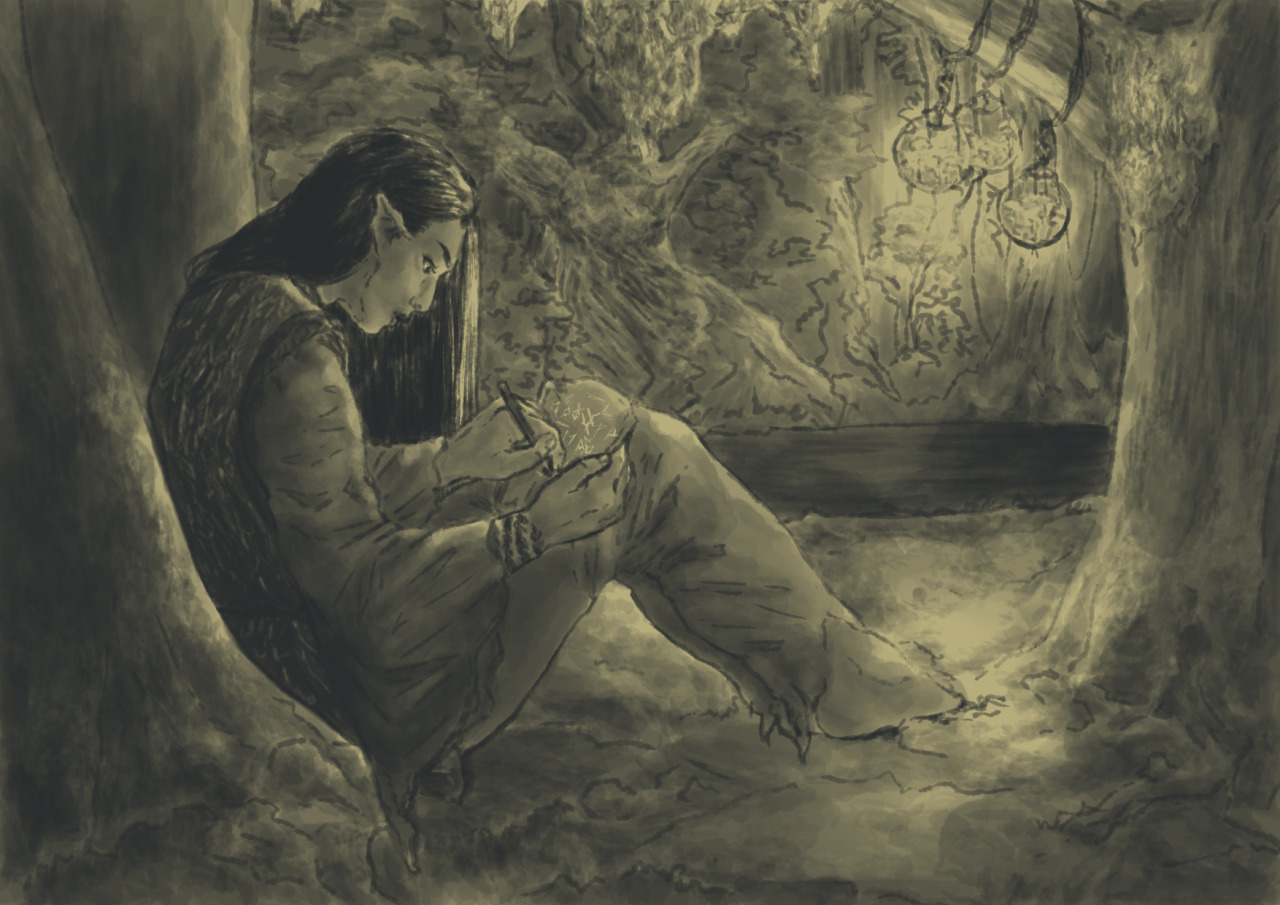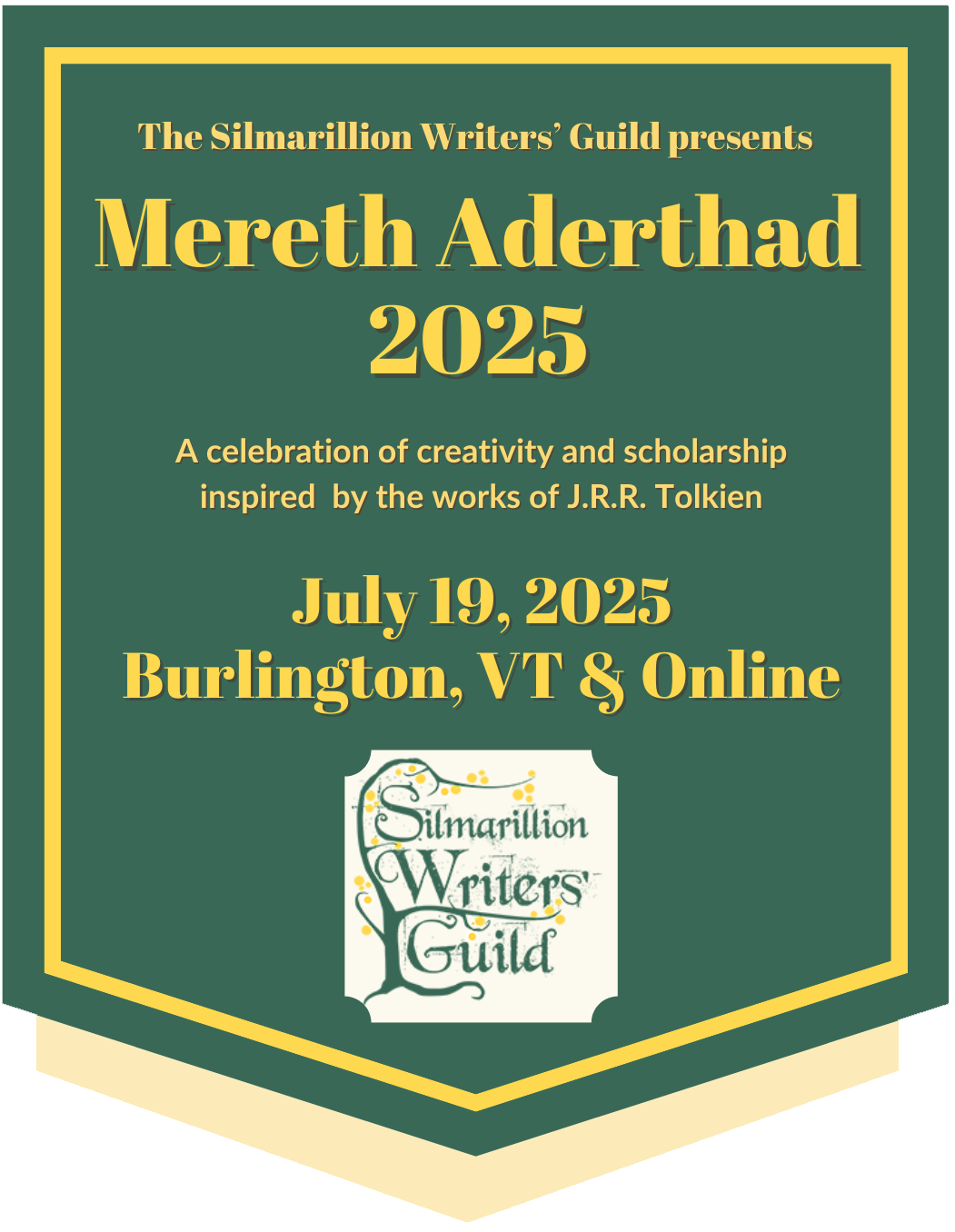Interview with Paul D. Deane by Himring by Rhunedhel
Posted on 24 April 2025; updated on 24 April 2025
This article is part of the newsletter column Mereth Aderthad.

At Mereth Aderthad 2025, Paul D. Deane will be giving a presentation on "Love, Grief, and Alliterative Verse in Tolkien’s Legendarium." In the abstract submitted for this presentation, he invokes as examples of love and grief characters from the Legendarium including Lúthien, Daeron, Túrin and Nienor, and Galadriel. He also speaks about alliterative poetry in the context of Tolkien’s own work, in Tolkien fandom and in his own creations, and mentions his epic poem, The Redemption of Daeron.
Paul posts on the SWG archive and on AO3 under the fandom handle of Rhunedhel. This is also the name of his character, a member of the Avarin culture, on Elendor MUSH, the text-based online roleplaying game based on the legendarium, which has played an important part in his fannish experience and his fannish works.
In the following interview, Paul shared with me some of the background he is coming from in his presentation and gave us some insight into his own poetic practice and his history with Tolkien’s works.
Himring: Do you have existing work (scholarly, fannish, or both!) that you would like us to highlight? I’ve only read the first chapter of the poem so far, but it’s really effective, so dramatic!
Paul: You should probably mention The Song of Shadows alongside The Redemption of Daeron. It's a shorter, and even more dramatic, poem. For a quick read, it'll get people into the original character arc Redemption of Daeron uses as background. I also put together the SWG link collection on alliterative poems set in Tolkien's legendarium. People wanting to read more Tolkien fanfic may want to check that out, along with the SFF community page on my site, which has a pretty exhaustive set of additional links to Tolkien fanfic poetry, among other things.
Himring: Paul’s themed link collection on alliterative verse, which was featured in the SWG newsletter last year, includes a range of recommendations for published Tolkien-based alliterative poems that are archived on his website as well as poems posted to fan archives. Well worth checking out!
Your fannish work shows intense engagement with Tolkien. What draws you to Tolkien and/or what is your favorite part of the legendarium? The abstract mentions canonical couples and characters in the Legendarium, and also the Lays of Beleriand (third volume of The History of Middle-earth). Are these your personal favourites also? Do you have favourites that have nothing to do with your topic? How about the Avari, perhaps, which seem to also feature significantly in your fanworks?
Paul: Well, when I created my character Rhunedhel back in the early 1990s, I picked the Avari precisely because Tolkien said so little about them. It gave me room to explore a lot of Tolkien's themes with an original character and background history. All of my Tolkien fanfic was written in-character by Rhunedhel, who is implicitly the Cordil mentioned in the poems (though he did not, I think, ever admit that in-character during roleplay, except to a few trusted friends!) It put my character in precisely the kind of role that some of Tolkien's great Elven singers found themselves in—surviving a great catastrophe, yet surviving as an elegiac voice. Though I don't think Rhunedhel ever sang a tale of the fall of his city in the East, Gonnmar. The grief was perhaps ... too fresh, in his character's timeline, there at the end of the Third Age.
But given the depth of timeline an Avarin character made possible, I was able to explore some of the themes that really engaged me as a fan. Being imprisoned in Angband, as an Elf, for example. Surviving that ... with others, implicitly including his first love, falling, where he did not.
And since Daeron is explicitly tagged by Tolkien as having wandered into the East, that gave me the perfect opportunity to explore the love and grief theme that is so, so central to Tolkien's understanding of the Elves. That whole theme of love and loss and surviving it all to live on, somehow despite it all. That really struck home, and in a way, is built into Rhunedhel/Cordil's whole story.
Himring: Why did you choose the topic of your presentation? Your abstract already explains a bit about how you see the theme of love and grief intersecting with the formal category of alliterative verse, when you say Tolkien’s "first impulse was to express his tales of love and grief in the form of epic, often alliterative poems", and I assume you will say more about that in the paper. Is there more you would like to say about this at this time without preempting your talk? Or are there things that you would like to say about love and grief and alliterative verse as topics more generally?
Paul: I don't have a lot more to say that won't be in my talk. I will say this, specifically, about alliterative verse. Tolkien viewed poetry and song as being little short of magic—we see Lúthien using song to soothe the savage beast and make evil sleep, to name just the first, most obvious instance. It's the rhythm and sound of poetry that makes poetry feel like magic, far more than anything else, and I've found that alliterative verse, being native to English in a way that rhyming poetry is not, really has that kind of raw power. It's worth learning how to do it, and how to do it well!
Himring: I gather that in your own works you are not using only standard alliterative verse (although there is of course also variation in historically attested forms), but you also experiment with the form (as in the Daeron poem, I think?). Would you perhaps like to comment on that?
Paul: When I started writing the Tales of the East sequence that ends with The Redemption of Daeron, I didn't really understand traditional alliterative verse, so I basically did with poetic form what a fanfic author does with the content of a story—take the basic ingredients, mix, and stir. The "Daeron Stanza" I use in the Tales of the East sequence uses split alliteration (AA/BB), as in "the loom of life's a frame we fill" ... ending with a short bob-and-wheel rhyming sequence. It works really well, but as far as I know, nobody else has tried to write that way at any length. Around the same time, I experimented with alliterative poems paraphrasing Psalms 1-8 from the Bible, where I also tended toward AA/BB alliteration. I think they also work well, but they're a lot more experimental, where I played with a range of different forms.
By 1999, when I'd finished the Tales of the East sequence, and was developing the first version of the Forgotten Ground Regained website, I had started on my translation of Sir Gawain and the Green Knight (which I hope to finish soon after a long hiatus.). At that point I was developing a much better understanding of traditional alliterative verse, which depends critically on using alliteration to link the first half of the line with the second. I was focusing more on learning how to replicate the Middle English form, but I also was getting up to speed on the Old English form. You can find the results of all that research in my Field Guide to Alliterative Verse.. Around then I wrote a morality play in traditional alliterative verse (Fifty Days Further), but I wasn't writing fanfic poetry as heavily. My family and I had moved to California in 1997, and then in 2001 to New Jersey, for my work as a computational linguist. At that point, life, as they say, happened, and it was only recently that I've been able to come back to my website and to writing poetry.
As part of that revival of my interest in alliterative verse, I've continued to experiment with alliterative forms. Since I am by first training, a theoretical linguist, I have a deep interest in understanding how things in language work, and I've put a lot of that energy into understanding how alliterative verse ticks.
In particular, I've been experimenting with a pattern of alliteration that I call "tail-stave meter", which alliterates at the end, rather than the beginnings, of half-lines of alliterative verse. This is totally not traditional, but I think it captures the spirit of alliterative verse in rhythms that are much more natural in modern English than the traditional "tail-stave" meter used in Old and Middle English and imitated by Tolkien. I recently published a poem written in tail-stave meter in an online poetry journal, The Brazen Head, which you can find here: The Song of David and Abishag – The Brazen Head.
The rhythms of tail-stave meter are a lot closer to the rhythms I used in my early Tolkien fanfic. I haven't tried it with a Tolkien fan poem yet, but I hope to soon!
Himring: Thank you very much, Paul, for those interesting and illuminating answers!
I hope you do get to write more Tolkien fan poems soon!
And meanwhile we look forward to your presentation.


Looking forward to hearing this talk
Poetry is so important to Tolkien's works. And it needs to be spoken rather than read to get the most from it.